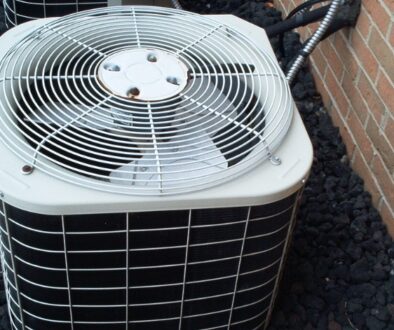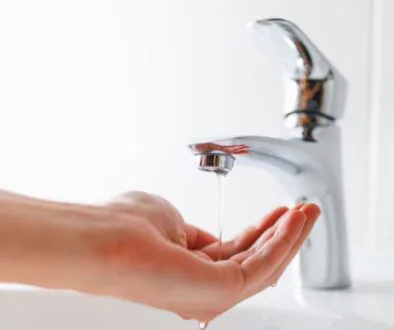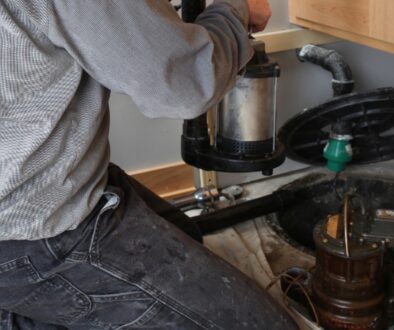Why Is My Furnace Blowing Cold Air?
When the temperatures drop in La Crosse, Wisconsin, a functioning furnace is critical to keeping your home warm and comfortable. So, what do you do if your furnace starts blowing cold air instead of heat? Before you panic, know that there are a few common issues that could be causing this problem—some of which you can troubleshoot and resolve yourself. In this blog post, the heating and HVAC experts at Niebuhr will help you understand why your furnace might be blowing cold air and what steps you can take before calling a professional.
Why Your Furnace Might Be Blowing Cold Air
1. The Thermostat Is Set Incorrectly
One of the simplest explanations for a furnace blowing cold air is a thermostat issue. If your thermostat isn’t set correctly, your furnace won’t heat your home as expected.
Troubleshooting Steps:
- Check the mode: Ensure your thermostat is set to “HEAT” and not “COOL.”
- Fan setting: If the fan is set to “ON,” the blower will run continuously, even when the furnace isn’t actively heating. Change the fan setting to “AUTO” so it only runs during heating cycles.
- Adjust the temperature: Make sure the thermostat is set to a temperature higher than the current room temperature.
2. The Air Filter Is Dirty
A clogged air filter can restrict airflow, causing the furnace to overheat. When this happens, your furnace’s safety mechanism may shut down the burners, leaving only the fan running—and blowing cold air.
Troubleshooting Steps:
- Check your air filter and replace it if it’s dirty or clogged. Most filters need to be replaced every 6 months, depending on usage.
- Regularly changing your air filter improves airflow and helps your furnace operate efficiently.
3. The Pilot Light Is Out
If you have an older gas furnace, the pilot light may have gone out. Without a lit pilot light, your furnace won’t produce heat. This is a common issue, especially if your furnace hasn’t been serviced recently.
Troubleshooting Steps:
- Locate the pilot light (refer to your furnace’s user manual if needed).
- Follow the manufacturer’s instructions to relight it safely.
- If the pilot light keeps going out, it could indicate a problem with the thermocouple or gas supply, requiring professional attention.
4. The Furnace Is Overheating
When a furnace overheats, it may shut down to prevent damage. This is often due to restricted airflow, dirty filters, or blockages in the ductwork.
Troubleshooting Steps:
- Check for dirty filters or blocked vents.
- Ensure no furniture, curtains, or other objects are obstructing airflow from your vents.
- If overheating persists, it’s best to call a professional to inspect the system for deeper issues like a malfunctioning blower motor or dirty burners.
5. The Condensate Line Is Clogged
High-efficiency furnaces produce condensation during operation. If the condensate line becomes clogged or frozen, the furnace may shut down to protect itself, leaving the blower running with no heat output.
Troubleshooting Steps:
- Inspect the condensate drain line for blockages.
- Clear the line if it’s clogged, and ensure it’s draining properly.
- If the line is frozen, carefully thaw it with warm (not boiling) water.
6. There’s An Issue With the Gas Supply
A problem with your furnace’s gas supply could prevent it from producing heat. This could be due to a closed gas valve, a gas leak, or insufficient gas pressure.
Troubleshooting Steps:
- Ensure the gas valve is open and that your gas supply is active.
- Check other gas appliances in your home (like a gas stove) to see if they’re functioning properly.
- If you suspect a gas leak, turn off the gas immediately, leave your home, and call your gas company or a professional for assistance.
7. The Ductwork Has Leaks
If the ductwork in your home has leaks, warm air might escape before it reaches your vents, making it seem like the furnace is blowing cold air. This is a less common issue but is worth considering, especially in older homes.
Troubleshooting Steps:
- Inspect your ductwork for visible gaps or holes.
- Seal any leaks with aluminum tape or mastic sealant.
- If the problem persists, consult a professional to perform a thorough inspection.
When To Call A Professional
If you’ve tried these troubleshooting steps and your furnace is still blowing cold air, it’s time to call in the experts. Professional technicians can diagnose complex issues, such as problems with the heat exchanger, blower motor, or electrical components, and provide a safe and effective solution.
Preventing Future Issues
To keep your furnace running smoothly and avoid unexpected problems:
- Schedule annual maintenance with a qualified HVAC professional.
- Replace air filters regularly.
- Keep vents and ductwork clean and unobstructed.
- Monitor your thermostat settings and ensure they are adjusted appropriately for the season.
Conclusion
A furnace blowing cold air is inconvenient, but it doesn’t always mean you need expensive repairs. By following these troubleshooting tips, you may be able to resolve the issue on your own. If the problem persists, don’t hesitate to reach out to Niebuhr Plumbing, Heating, and Air Conditioning. Serving La Crosse, Onalaska, Holmen, and surrounding areas, our team of experienced technicians is here to help keep your home warm and comfortable all winter long.




